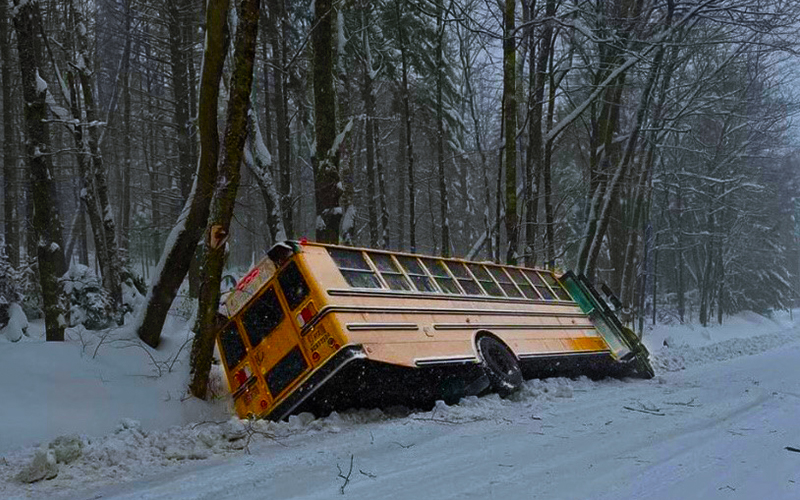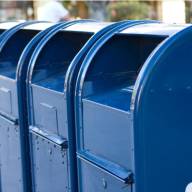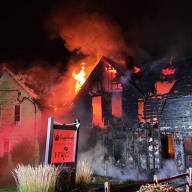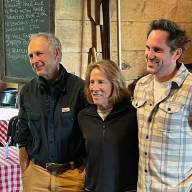By Claire Pomer, Harwood Union correspondent
Harwood Union science students are working on a school bus tracking app, born out of what students and families experienced in a recent winter when a school bus went off the road in Moretown.
That work is part of the school’s participation in the Samsung Solve For Tomorrow program, a nationwide contest where public and charter schools that serve grades 6-12 can submit a solution to a community problem with sustainability in mind. Harwood was named one of the six Vermont finalists, and middle school science teacher Angela Selvaggio is leading the team of students representing Harwood.
Earlier this year, Ms. Selvaggio asked her science classes to consider the prompt: How could they solve a community problem while also being environmentally friendly? “We probably started brainstorming in late September, maybe early October,” said student 1, a seventh grader. According to him, some of their first ideas were repurposed cleat and ski boot covers. The idea was to create a cover out of old shoes when walking inside so as not to damage the floors and reuse materials at the same time. However, Selvaggio, who has participated in the contest before, knows that Samsung (as a tech company) prefers technological applications, so they went with one of their other options: a bus-tracking app.
“The app is born out of kids’ actual lived experiences and it directly impacts them,” said Selvaggio. Students 1 and 2, two of her seventh-grade students, agreed: Student 1’s bus has gone off the road before and Student 2 was on the bus that flipped last January. “We thought this would be helpful because the roads get bad in the winter and parents don’t know if the bus is just running late or if it went off the road,” they said.
“Vermont is known for being rural and having dirt roads, so this would be something that could really benefit our state,” Student 2 added. “No one wants to stand out in the cold, so if kids know that the bus is 5 minutes late, they can spend 5 more minutes inside.” The app would also allow parents to mark their child as absent if they weren’t going to be riding the bus, so bus drivers could spend less time waiting at empty stops. The solution is also environmentally friendly: by condensing their route every morning, especially on buses that serve the more rural areas or travel down long and winding roads, buses save on gas.
Selvaggio is unsure about how exactly the project will proceed. Neither she nor any of her students have any experience in app development, but this idea may not be the final one. “Sometimes the idea we start with changes and morphs as we learn about our obstacles and constraints.”
On December 5, Samsung revealed their list of 300 state finalists, who all received a $2,500 Samsung tech package (all to be spent on Samsung technology). Alongside Harwood, the other Vermont state finalists were Brattleboro Area Middle School, Fair Haven Union Middle and High School, Hazen Union High School, Mt. Anthony Union Middle School, and Rutland High School. The state winner (announced between January 30 and March 7) will win $12,000, including the original $2,500—of which 50% will go to Samsung tech and 50% will go to materials of that school’s choice.
On March 26, Samsung will announce the 10 national finalists, who will win a total of $50,000 and a trip to the judging location to pitch their submission in person. From March 26 to April 16, the public is welcome to vote for their favorite submission online and Samsung employees vote for their favorite submission. The results (the Community Choice Award and the Employee Choice Award) are revealed on April 29 on the in-person pitch trip alongside three national winners. All three national finalists receive a total of $100,000 and a package of classroom materials.













